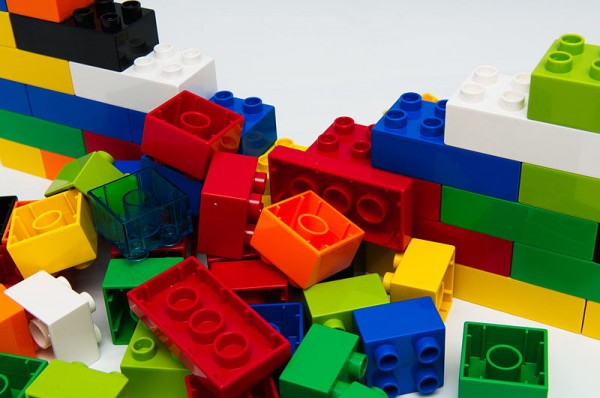Most nations are partiotic at heart, zealously guarding their identities and traditions. Most tend to be wary of anything that smacks of a foreign invasion however, this has proved to be a rather selective defence mechanism in most cases as xenophobic leanings are quite capable of deserting people when it suits. Slowly but surely the world has become a far more cosmopolitan place with stylistic influences reaching far and wide but some have proved to be more enduring than others.
In recent decades it has been all things Scandinavian which have generally been top of the pops.
Origins
I was going to say that it would be difficult to pinpoint a moment in time when Scandinavian influences really began to make a serious impression. On reflection, however, I suppose that the Scandinavian effect could be dated back to 1949 when a simple new toy was introduced to the world.
Lego
Lego was an act of genius the like of which may never be repeated. A simple series of interlocking coloured bricks which could be used to fashion just about anything a child’s imagination could conjure up and then dismantled and used again for an infinite number of projects. Lego was simple, easy to understand, eminently practical and did what it was supposed to do with the minimum of fuss but yet was stylish and of high quality.
There in a nut shell are the values that define Scandinavian style. The adult world was to be greatly influenced by Scandinavian values but the kids got there first!
Home Interiors
Our eyes had been opened and we were ready for a liberal dose of Scandinavian influence, this time on our tastes in interior decor. Today’s European interiors from Spain to Slovenia are often sleek and simple with clean lines, no clutter and little ornamentation and the change of direction was in large part due to the arrival of the Swedish retailing giant.
The ethos which defines the Scandinavian style is that functionality is king. Beauty is to be found in simplicity of form and most ornamentation is unnecessary because it serves no practical purpose. Many of the concepts we now associate with Scandinavia first emerged in the 1950’s when a new form of democratic socialism became the dominant political culture and it was one of social responsibility.
There was a belief that good things should be available to all, not just to the wealthy. Scandinavian design was all about functionality, simplicity of form and affordability and when IKEA arrived we were all quick to embrace these ideas. IKEA’s popularity was no doubt driven mainly by the price point but the style soon began to influence our lives.
The Scandinavian style has now been fully embraced across the planet and with good grace. Many people have now accepted, consciously or otherwise, that there is much to be admired. No surprise then that the Children’s clothes from the region have proved to be so popular in recent years.
Kid’s Fashion
Not so long ago, when I was a youngster (well it was actually a long time ago but we won’t go there) kids clothes were only on offer in a limited number of retailers and neither the children nor the parents took much of interest except for special occasions. Kids spent their time playing and running around outside. There was no internet and few television channels which meant that youngsters like me had no idea what celebrities were wearing and we didn’t care.
Fashion was for older people, kids clothes were for getting dirty. The arrival of home computing, the internet, mobile phones and multi-channel broadcasting changed everything. Kids slowly came in from the cold to spend hours in their rooms zapping aliens and texting. A new fascination with fashion took hold and then younger and younger kids wanted to dress like Cheryl Cole and Beyonce.
Parents became anxious to please and to keep up with the Jones’s spawning a mass of mini me’s. Kids clothes simply became scaled down versions of adult styles and designer goods were all the rage but things just might be about to change again, at least for some.
A number of kid’s collections from Scandinavia have met with great success across Europe and perhaps their influence is beginning to spread. Christina Rhode, Mini Rodini and Indikidual, amongst others have proved immensely popular. After what I have said about the Scandinavian style you might expect these collections to be packed with rather boring garments in neutral tones but that is not the case.
The Scandinavian ethos is that things should be fit for purpose and good value for money. Kids are not rooms to be furnished. Kids are full of character and should have fun and their clothes should therefore also be fun, durable, practical and affordable and that is generally exactly what Scandinavian brands deliver. These are colourful, appealing styles but they are also age appropriate and unpretentious.
They allow kids to run around and play and they are affordable too. That is why we love them here at I Dream Elephants and why our customers adore them. Kids can be kids and parents can be solvent!
So you see we really needed that flat packed furniture to open our eyes to the Scandinavian way of seeing the world. Kids saw the light years ago when they got their hands on Lego, it was just the adults that needed a helping hand.
Sally Stacey is a keen writer and small business owner with an interest in interior decor and fashion trends.

